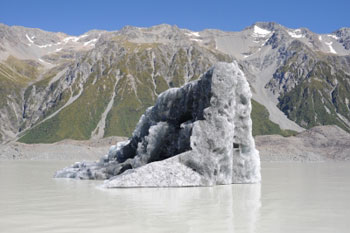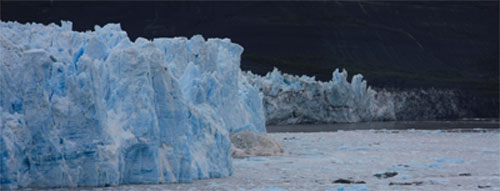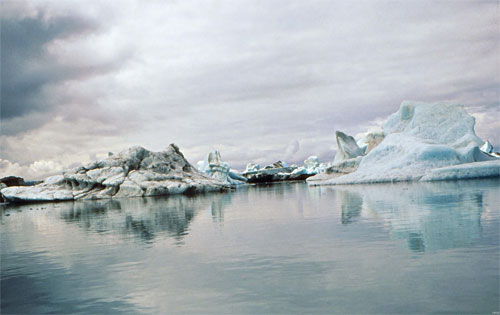
Source: Global Warming, Frederico Stevanin, FreeDigitalPhotos.net
The final physical process that you will examine is glaciation. Glaciation is the modification of the land surface by the action of glaciers (large blocks of ice). Since glaciers move, they can pick up and transport rocks, just as in the physical process of erosion. Glaciers transport material and can melt, which means that they can also deposit material. Glaciated landscapes are the result of both glacial erosion and glacial deposits.

Source: Global Warming, Frederico Stevanin, FreeDigitalPhotos.net

Source: Submarine Surfacing, Shad O 'Neel, U.S. Geological Survey
This is an image of several miles of glaciers that have surfaced from underwater. These glaciers are a part of the Yahtse Glacier in Alaska.

Source: Ice Wonderland, Florian Maldonado, U.S. Geological Survey
This is a photo of several small glaciers on Vitus Lake, Bering Glacier, Alaska.